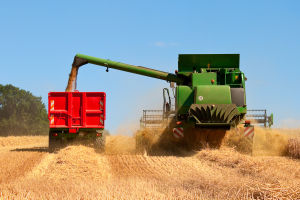Farming practices have evolved considerably over the years, and one such practice that often piques curiosity is the rolling of giant hay bales.
But why do farmers roll their hay like this? What purpose does this technique serve?
Let’s take closer into the reasons behind this peculiar farming practice.
1. The Need for Efficient Storage
One of the primary reasons farmers opt for rolled hay bales, particularly the large cylindrical ones, is for more efficient storage. Unlike loose hay that can be difficult to store and prone to spoilage, rolled hay bales are compact and easy to stack. This compact shape allows farmers to store more hay in less space, keeping it dry and protected from the elements. The tightly packed structure reduces exposure to moisture, which is essential in preventing mold and rot.
2. Faster Harvesting and Handling
The process of rolling hay into bales offers significant time savings when compared to older methods of hay collection. Traditional methods, which involved stacking loose hay or tying it in smaller bundles, were labor-intensive and time-consuming. With modern machinery, farmers can quickly gather hay, roll it into large bales, and move them to storage areas in a fraction of the time. This speed is especially important during peak harvest times when efficiency can make or break a successful season.
3. Improved Preservation of Hay Quality
Rolling hay into large, well-packed bales helps preserve its quality. When hay is rolled, it undergoes a process known as "compression," which reduces air pockets and tightly seals the material. This compression helps preserve the nutrients in the hay and reduces the chance of spoilage. If hay is left out as loose cuttings, it is more likely to lose nutrients quickly due to exposure to air and moisture.
4. Weather Protection and Durability
Another reason farmers roll hay into large bales is to protect it from the unpredictable nature of weather. By rolling hay, especially if it’s wrapped in plastic, farmers can safeguard the hay from rain, snow, and even intense sunlight. This protective wrapping helps prevent water from seeping into the hay, ensuring it remains dry and suitable for animal feed throughout the season. In contrast, loose hay can become a soggy, unappetizing mess after a rainfall.
5. Easy Transportation
Once hay is rolled into large bales, it becomes much easier to transport. Farmers can use machinery like tractors or specialized bale movers to shift these bales from the field to storage or directly to feeding areas. This is far less labor-intensive than hauling loose hay. The convenience of transporting hay in large, sealed bales also makes it possible to move hay more efficiently across longer distances without it falling apart.
6. The Role of Bale Wrapping
Modern farmers often wrap their hay bales in plastic film to ensure better preservation. This process is crucial for preserving the quality of hay, particularly for silage. The airtight seal prevents the bale from deteriorating due to exposure to air. Additionally, the plastic film protects the hay from pests, mold, and degradation caused by environmental factors. This technique has become more widespread in recent years, as it helps farmers ensure that their hay lasts longer, providing vital winter feed for livestock.
7. Why the Large Size?
The size of the bale itself also serves a purpose. By rolling hay into larger bales, farmers reduce the amount of time and labor involved in managing the hay. Larger bales mean fewer bales overall, which results in less time spent on tasks like moving, stacking, and storing. Despite the larger size, they are still manageable, especially when wrapped and handled using the appropriate machinery.
Lykkers, rolling hay into giant bales is not just a quirky farming practice, but an effective, time-saving technique with multiple benefits. From easier storage to better quality preservation and more efficient transportation, this method has revolutionized the way hay is harvested and managed.
Whether you're a seasoned farmer or simply curious about the mechanics of agriculture, understanding why farms use this method highlights just how technology and innovation continue to shape the way we produce and handle food!


